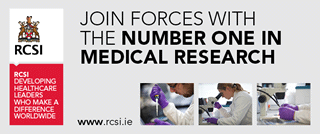Many Non-Irish Nationals Have Similar Employment and Education Levels to Irish People, But Some Remain Disadvantaged

Many non-Irish nationals are at least as likely to be employed and highly educated as Irish people, according to new ESRI research. The research examines how well migrants are settling into Ireland, now one of the most diverse countries in the EU, with 17 per cent of the population born in another country. The study finds that non-Irish nationals are matching Irish nationals on several key economic and social indicators, but that some groups remain disadvantaged.
Employment
According to the report, 4 per cent of Western European nationals (excluding the UK), were unemployed in 2017, compared to 7 per cent of Irish nationals and 16 per cent of African nationals. Employment rates were slightly higher for non-Irish nationals (70 per cent) than Irish nationals (66 per cent). However employment rates varied across national groups and the employment rate was very low for African nationals (circa 45 per cent).
Education
37 per cent of Irish people of working age had third-level education in 2017. The percentage was higher across almost all non-Irish groups. Western European nationals (excluding the UK) were most likely to have third-level education, at 74 per cent. Eastern European nationals were least likely, but the figure remained high at 35 per cent.
In English reading, 15-year-old immigrants from non-English speaking backgrounds had lower English reading scores, on average, than their Irish peers. However, on average there was no difference between Irish and non-Irish 15 year olds in either science or mathematics scores.
Poverty and deprivation
In 2016, some 23 per cent of non-Irish nationals were living below the income poverty line (drawn at 60 per cent of median household income) compared to just under 16 per cent of Irish nationals. Consistent poverty rates (the proportion of a group that is income poor and experiencing basic deprivation) were 13 per cent for non-Irish as a whole, compared to 8 per cent for Irish. This rate was very high for non-EU nationals (29 per cent).
Citizenship
Ireland is now one of the most diverse countries in the European Union, with approximately 17 per cent of the resident population born in another country. In 2017, over 8,000 immigrants became Irish citizens, many of whom were Polish, Romanian, or Indian. However this figure is 68 per cent lower than the 2012 peak, when 25,100 naturalisation certificates were issued.
Muslim community
Each Monitoring Report on Integration includes a special focus on a specific issue. The 2018 report focuses on Muslims in Ireland using Census data. The Muslim population has increased from less than 20,000 in 2002 to over 62,000 in 2016. Muslims are a diverse group in terms of faith, language and nationality. Just under 30 per cent were born in Ireland. Compared to the total population, Muslims are highly educated but are also more likely to be unemployed. They are disproportionately young and urban-based, and are twice as likely as the entire population to be students. Regarding the flow of Muslim immigrants in recent years, we observe a shift in origin, with more arriving from South Asia, and fewer from Sub-Saharan Africa.
Dr Frances McGinnity, lead author of the report, commented: “With both high rates of employment and educational attainment, immigrants from Europe and North America are performing very well in the Irish labour market. However, more concerning findings emerge for other groups, including African nationals,”
Launching the report, Minister of State for Equality, Immigration and Integration David Stanton, TD said: “In working to support integration and diversity, across the public, private and voluntary sectors, access to detailed information in order to inform and guide our work is vital. This Integration Monitoring Report provides essential evidence on outcomes for migrant groups in Ireland and shows how these compare with outcomes for the rest of the population. Understanding and using this evidence will help us to design and target effective interventions to support integration and remove barriers.”







